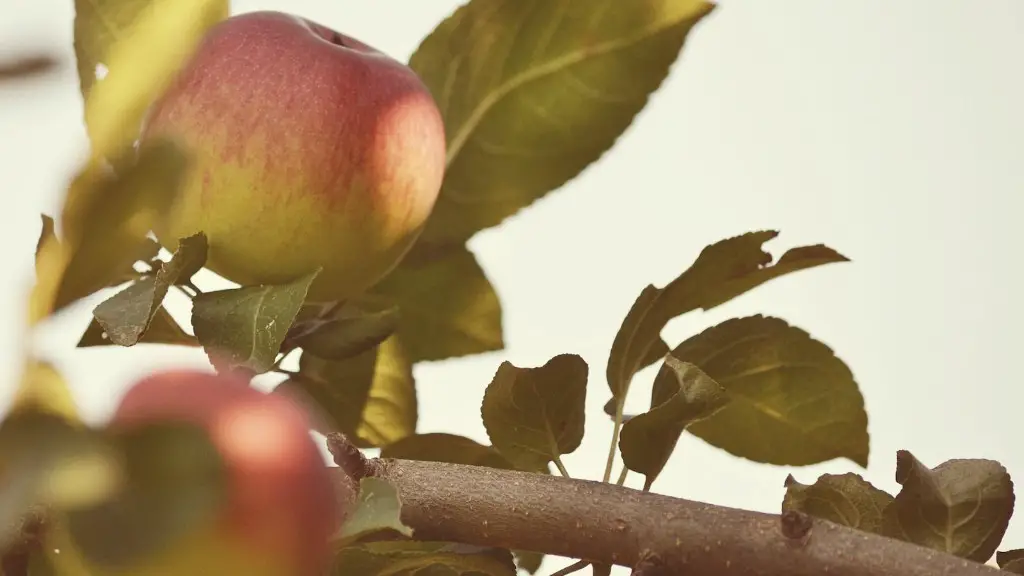A potted lemon tree will typically require a substantial amount of sun to thrive. That said, it is important to be aware that too much can be detrimental to their growth and productivity. To ensure optimal plant health and citrus production, give your lemon tree the following level of exposure: six to eight hours of direct daily sun during the spring and summer, and four to five hours during the fall and winter. When in doubt, monitor the lemon tree’s leaves as they will indicate if it is getting too much sun. Leaves that are faded, curled, or burned are a sign that your lemon tree needs a break from the sun.
Along with the amount of sunlight the lemon tree receives, the condition of the potting soil is also important. For starters, use a well-draining soil that is rich in organic matter. If the soil drains too slowly, the lemon tree’s roots will become waterlogged and die. Furthermore, the soil should be fertilized every month or two during the growing season as this supplies the lemon tree with crucial essential nutrients. Lastly, topdress the soil every two to three weeks with a layer of compost to protect the soil and retain water in the summer months.
Watering is another important factor to consider when growing a lemon tree in a pot. As a general rule, water when the top inch or so of soil is dry. In the spring and summer, water as often as necessary to keep the soil moist. However, during the fall and winter, slow down the frequency of watering and only water after the soil has dried out completely. In addition, during the summer months it is best to invest in a self-watering pot as this will take some of the burden off you.
Indoor or Outdoor Growing
When it comes to growing a lemon tree in a pot, the decision of whether to grow it indoors or outdoors is another important factor to consider. In the inside, a lemon tree will require ample sunlight from a south-facing window; however, it also needs to be protected from cold drafts and temperatures that go below fifty-five degrees. If left exposed to cold air for prolonged periods of time, the tree may suffer from water stress or even die. On the other hand, if you choose to grow your lemon tree outdoors, the tree must be in an area that provides six to eight hours of direct sunlight daily, and which has protection from strong winds and freezing temperatures.
Whether you opt to grow your lemon tree indoors or outdoors, you must do everything you can to keep its environment consistent. This means giving it the same amount of light, water and nutrients on a daily basis. Furthermore, sudden changes in temperatures or positioning can cause severe shock, which can lead to irreversible damage and even the demise of your lemon tree.
When handled properly and provided with the right amount of light, water, and nutrients, a potted lemon tree can make for a beautiful, productive and rewarding addition to any home. With its pristine white flowers and delicious lemons, it is sure to bring an abundance of joy and a tempting aroma.
Light Sources
In those instances in which it is not possible to foster an ideal indoor or outdoor environment, like a winter season in which the lemon tree` will not be receiving enough direct sunlight, you can build a strong foundation for the tree’s growth by investing in an artificial light source. This can be done by utilizing either a specifically designed grow light for citrus, or a fluorescent bulb or LED panel that emits a warm light. If you go with the latter option, make sure to place the light source at least eighteen inches away from the leaves as this will prevent it from burning the leaves.
That said, if you choose to use an artificial light source, keep in mind that it does not replace the sun and your tree will still need to soak in natural light from the sun. The artificial light should be used to boost the tree’s growth, not to solely sustain it.
Repotting
Repotting is a great way to ensure that your lemon tree is healthy and productive. When replanting, use a deep pot that is only one or two sizes larger than the current pot and also use a well-draining potting mix. Furthermore, it is important to check the root system of the tree as this will tell whether it is time to repot. If the roots are crowded and have filled up the entire pot, it is time to repot the tree. When repotting, loosen the roots from the sides and bottom of the root ball, and fill the new pot with soil.
Pruning
Pruning is another excellent way of bolstering the health of your lemon tree. This does not need to be done regularly and for the most part, you can leave the natural form and shape of the branches intact. Having said that, it is important to trim off any dead or diseased branches as soon as they are spotted. This can be done with your hands or a pair of clean, sharp scissors.
If you decide to prune the branches more extensively, it is best to do so in the winter as this is when the tree is in its dormant stage and pruning has less potential to damage it. Keep in mind, however, that the tree will produce mostly leaves during this dormant period and so it may take a few months for the fruits to appear.
Ventilation and Humidity
When it comes to caring for a potted lemon tree, ventilation is another important factor to consider. If a lemon tree is not given enough ventilation, it can be another major cause of shock. This can mean anything from a closed window or a closed door, to a tightly covered pot. To ensure optimal ventilation, place the pot in an area of the house that has a lot of air circulation such as near an open window, or in an outdoor patio or veranda where there is a slight breeze.
Moreover, lemon trees prefer a slightly humid environment, though not too humid as this can lead to root rot. To adjust the humidity levels indoors, put potted trees together and water the floor daily to elevate the moisture content. Additionally, consider investing in a humidifier and placing it near the lemon tree.
Maintenance
In order to ensure that your lemon tree stays healthy and productive, it is important to keep up with its maintenance needs. Prune the tree as needed, water it regularly, fertilize it every few weeks, apply a layer of compost over the potting soil every two to three weeks and adjust the humidity of the environment. Furthermore, if you decide to grow your lemon tree indoors, mist its leaves with a water bottle regularly as this will keep them looking healthy and help it absorb more light.
It is also recommended to inspect the tree for signs of pests and diseases every few weeks. If you spot any symptoms such as spots on the leaves or insects on the branches, immediately administer a suitable treatment solution. Lastly, make sure to keep the lemon tree in an area of your house that is free from cold drafts and extremes in temperature.


